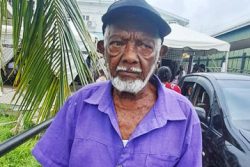GENEVA, (Reuters) – Mexico’s hardline fight against drug gangs has driven violence to levels higher in than many war zones but the role the United States plays in arming these brutal cartels appears exaggerated, independent arms researchers said on Thursday.
The Geneva Declaration, a Swiss-driven diplomatic initiative, said in a global report on armed violence that the success of President Felipe Calderon’s decision five years ago to use the army to fight the cartels was debatable.
Deaths from drug-related violence in Mexico have surged since Calderon took office in December 2006, damaging support for his National Action Party (NAP) and caused strains in relations with the United States.
“Some Mexican cities and regions suffer from extraordinarily high levels of violence, higher than found in many war zones,” said the report, citing Ciudad Juarez, epicentre of drug violence in the northern state of Chihuahua.
“The Mexican government has openly declared war upon drug traffickers, with ambiguous results. While the drug cartels have been weakened and divided, the resulting struggles and readjustments of power have given way to even more episodes of overt violence.”
The report said drug-related violence has become increasingly organised and paramilitary in character, including gruesome decapitations, mutilations, mass executions and extreme torture.
More than 44,000 people have died in this surge of violence in Latin America’s second biggest economy since Calderon declared war on the drug gangs.
Santiago Creel, a leading presidential candidate of Mexico’s ruling party, told Reuters on Wednesday that he would break with government policy and withdraw the army from the drug war if he wins the nation’s election in July 2012.
U.S. TENSIONS
The escalation in violence has put strains on Mexico’s relations with the United States, with Calderon calling on Washington to clamp down on the large number of weapons used by Mexico drug gangs that originate from north of the border.
Mexico has said 90 percent of the weapons used by drug gangs are bought in the United States and wants the U.S. Congress to reinstate a ban on the sale of assault weapons that expired in 2004.
But Keith Krause, an arms expert and one of the authors of the Geneva Declaration report, said it was not clear how many of the weapons used by Mexican drug gangs came from the United States.
He said only 30 percent of an estimated 100,000 weapons confiscated in Mexico each year are sent by authorities to the United States for identification on suspicion of having crossed the long, porous border.
Of these, 80 percent turn out to be U.S.-made but that does not mean that 80 percent of the overall total of arms seized in Mexico are of U.S. origin, as is often claimed, he said.
“It’s not the case that most of the weapons that are seized by Mexican police from drug gangs come from the United States… it’s very misleading,” Krause told a news briefing.
He said seizures and photographs suggest significant quantities of military-style weapons such as grenades and even rocket launchers, were not coming across the U.S. border but coming from surplus stocks in places such as Guatemala or even from other official sources in Mexico itself.
The Geneva Declaration report said at least 526,000 people were killed in armed violence worldwide each year between 2004 and 2009 which was in line with figures in its 2008 report.
More than one in four deaths occurred in 14 countries, seven of them in Central and Latin America. El Salvador topped the global list for 2004-2009, followed by Iraq and Jamaica.





